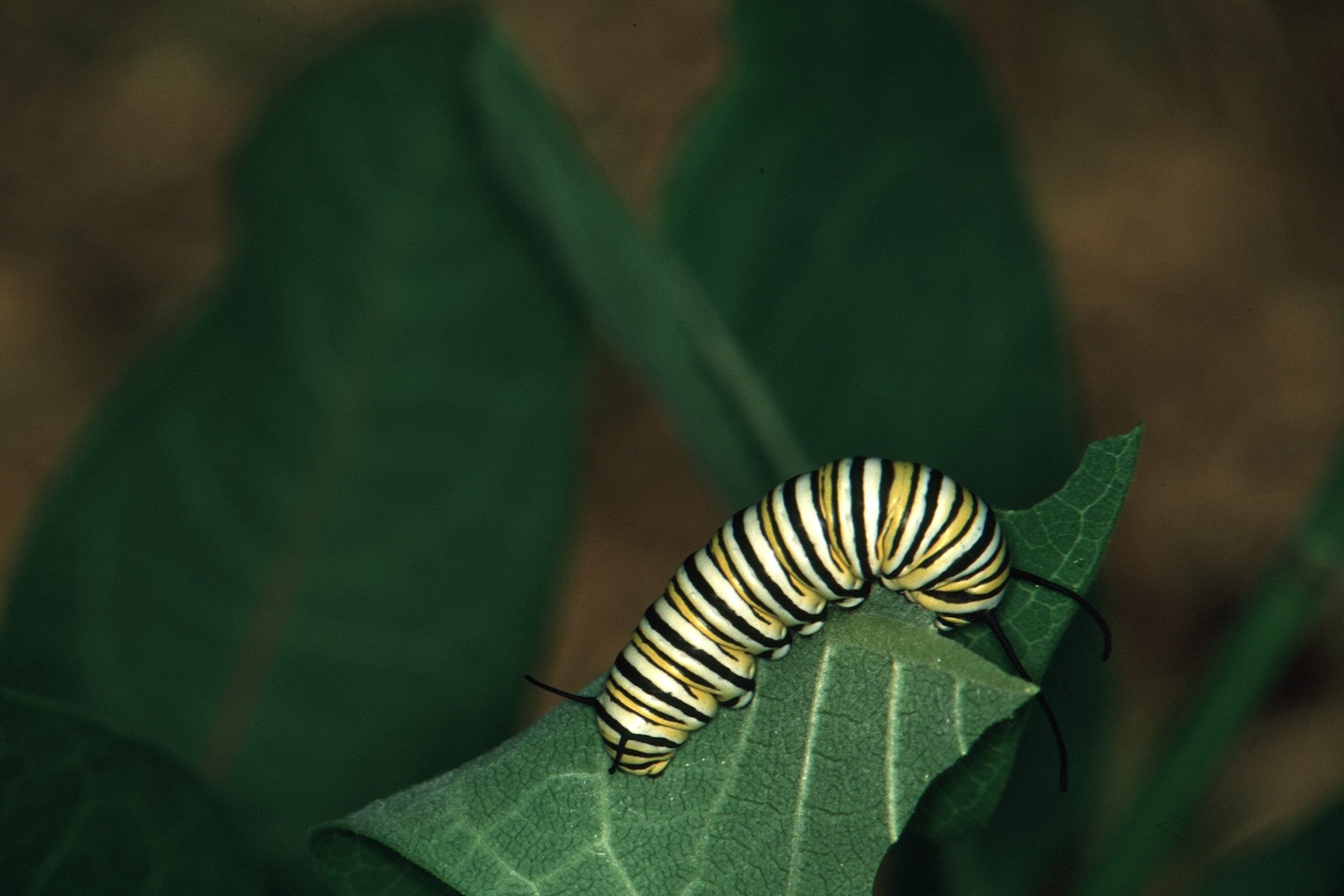Flight of the monarch butterfly
One of the most familiar and charismatic insects in the High Country is the beautiful monarch butterfly, Danaus plexippus. This fascinating butterfly is a good example of one that migrates long distances, which though not totally uncommon for many insects, is taken to an extreme by the monarch. Animals use migration to deal with a changing climate, for example moving south from more northern areas to avoid cold winters and north from southern areas as warmer weather approach. This applies well to the monarch, and for a butterfly with wings only four to five inches across, their long journey is a natural wonder. Understanding its annual migration cycle helps in knowing when you can expect to see it in our area.
Phot Credit: Jennifer E. Dacey, University of Rhode Island, Bugwood.org
One of the most well-known monarch butterfly migrations is from the northern reaches of the central and eastern US, and nearby southern Canada, to Mexico. As summer wanes and fall approaches, adult monarchs sense it is time to head south. In the case of a destination in central Mexico flying up to 2500 miles! Normally the life span of an adult monarch butterfly is measured in a few weeks, but those in this long-distance fall migration will live up to six months or more. Butterflies fly in large groups up to 100 miles per day during daylight, following pathways that include the Carolina Piedmont, Appalachian Mountains and Ohio and Mississippi River valleys. The flight paths come together in central Texas as they head for mountains in central Mexico. How do they find their way? Though this is not completely known, many experts point to what is referred to as the sun-compass method, where the angle of the sun relative to the horizon, along with the butterflies “internal clock”, helps them orient. Interestingly, it is also thought orientation can be aided by the earth’s magnetism, much like how a hand-held compass works. In their Mexico winter home monarchs congregate in trees by the millions and this location allows them to avoid the cold winters from where they originated.
Photo Credit: Jerry A. Payne, USDA Agricultural Research Service, Bugwood.org
Spring signals an exodus from Mexico back north. This return migration is more complex since the butterflies are far more scattered than those found in the more distinct flight paths seen in the fall. Once entering the southeastern and south-central US, mated female butterflies lay eggs on various species of the required food plant for caterpillars, milkweed, and then die. This marks a big difference from the fall migrants that headed south and those returning north. Rather than the overwintering adult returning northward for the home they left, it is their offspring that continue the journey. Depending on how far north their home is several generations can occur before the adults stop moving and eventually spend the summer. As fall approaches the migration cycle repeats.
In our area the time we see this beautiful butterfly depends on the season, as well as which direction they are traveling; north or south. The monarchs you see during September-November are likely part of the migratory adults heading south. Though perhaps not seen in the great numbers once observed years ago, it’s not unheard of to see a large group in our area. Monarchs seen in the spring are likely part of the returning generations heading north, while any seen in mid to late summer are possibly summer residents with us. Spring and summer are the best time to find caterpillars feeding on milkweed plants before they eventually form a structure called the chrysalis from which the adult emerges. If you are fortunate enough to see this oblong casing hanging from a plant, you may see the developing adult butterfly curled up inside.
Photo Credit: Edward L. Manigault, Clemson University Donated Collection, Bugwood.org
There is currently great concern about the monarch butterfly since numbers have been falling for years. The reasons are complex, but experts identify as possible causes a reduction in their overwintering areas in Mexico, loss of milkweed plants the spring generation in the southern US need, and possibly the widespread use of pesticides. If you are interested in learning more about the fascinating monarch, and helping in their conservation, an excellent organization is Monarch Watch (monarchwatch.org), which was the source of some information found in this article. Additional information may be found at https://monarchjointventure.org. Also, providing the milkweed plants that the caterpillars need to eat, and flowers the adults use for energy by feeding on nectar, on your property are great things you can do. Your involvement will help ensure this magnificent butterfly continues to be seen in the High Country.
LInk to Watauga Democrat Article:



